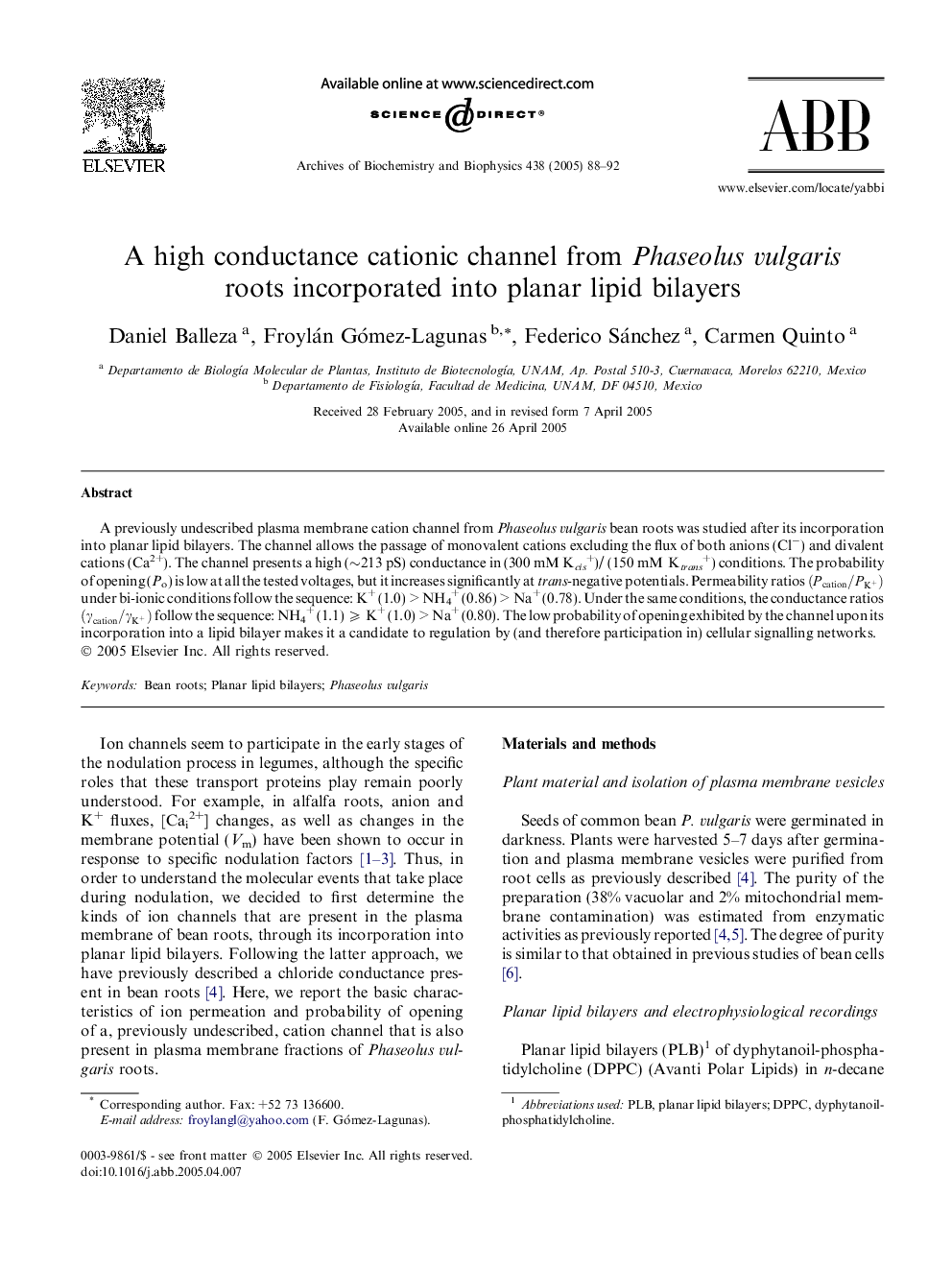| Article ID | Journal | Published Year | Pages | File Type |
|---|---|---|---|---|
| 9882209 | Archives of Biochemistry and Biophysics | 2005 | 5 Pages |
Abstract
A previously undescribed plasma membrane cation channel from Phaseolus vulgaris bean roots was studied after its incorporation into planar lipid bilayers. The channel allows the passage of monovalent cations excluding the flux of both anions (Clâ) and divalent cations (Ca2+). The channel presents a high (â¼213 pS) conductance in (300 mM Kcis+)/ (150 mM Ktrans+) conditions. The probability of opening (Po) is low at all the tested voltages, but it increases significantly at trans-negative potentials. Permeability ratios (Pcation/PK+) under bi-ionic conditions follow the sequence: K+ (1.0) > NH4+ (0.86) > Na+ (0.78). Under the same conditions, the conductance ratios (γcation/γK+) follow the sequence: NH4+ (1.1) ⩾ K+ (1.0) > Na+ (0.80). The low probability of opening exhibited by the channel upon its incorporation into a lipid bilayer makes it a candidate to regulation by (and therefore participation in) cellular signalling networks.
Related Topics
Life Sciences
Biochemistry, Genetics and Molecular Biology
Biochemistry
Authors
Daniel Balleza, Froylán Gómez-Lagunas, Federico Sánchez, Carmen Quinto,
